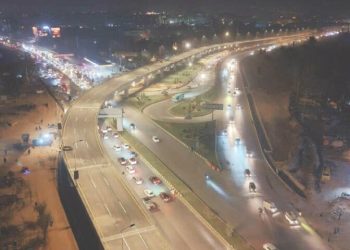Rituals expected to draw more than two million pilgrims this year, praying for peace in Gaza, Yemen and Sudan.
More than 1.5 million Muslim pilgrims have gathered in Saudi Arabia’s Mecca for the start of Hajj, taking place this year against the harrowing backdrop of Israel’s continued onslaught on the Gaza Strip.
The annual pilgrimage began on Friday with crowds of robed worshippers circling the Kaaba, the black cubic structure at Mecca’s Grand Mosque, many expressing sadness eight months into the Israel-Hamas war.
“Our brothers are dying, and we can see it with our own eyes,” said 75-year-old Zahra Benizahra from Morocco.
After more than eight months of war, Palestinians in Gaza were not able to travel to Mecca this year because of the closure of the Rafah crossing in May when Israel extended its ground offensive into the strip’s southern city of Rafah on the border with Egypt.
Palestinian authorities said 4,200 people from the occupied West Bank had arrived in Mecca for the pilgrimage. One thousand more pilgrims, from the families of Palestinians killed or wounded in the war, who were already outside Gaza before Rafah was closed, were invited by King Salman of Saudi Arabia.
However, the Gulf kingdom’s minister in charge of religious pilgrimages, Tawfiq al-Rabiah, warned last week that “no political activity” would be tolerated during the event.
This year’s Hajj has also brought Syrian pilgrims to Mecca on direct flights from Damascus for the first time in more than a decade, part of an ongoing thaw in relations between Saudi Arabia and conflict-stricken Syria.
Syrians in rebel-held areas used to cross the border into neighbouring Turkey in their exhausting trip to Mecca for Hajj.
Hajj, one of the world’s largest religious gatherings, involves a series of rituals in Mecca and its surroundings in western Saudi Arabia that take several days to complete.
One of the five pillars of Islam, Hajj must be performed at least once by all Muslims who have the means to do so.
Some have waited for years for the chance to make the trip, with permits allocated by Saudi authorities on a quota basis for each country.
Uniting Muslims
Nonaartina Hajipaoli, 50, told the AFP news agency she felt privileged to be among the 1,000 pilgrims who came this year from Brunei in Southeast Asia.
“I’m speechless, I can’t describe what I feel,” she said.
The climax will come on Saturday with daylong prayers on Mount Arafat, where the Prophet Mohammed delivered his final sermon.
The pilgrimage is a moving spiritual experience for pilgrims who believe it absolves sins and brings them closer to God, while uniting the world’s more than two billion Muslims.
It is also a chance to pray for peace in many conflict-stricken Arab and Muslim countries, including Yemen and Sudan, where more than a year of war between rival generals has created the world’s largest displacement crisis.
As has been the case for several years, the gathering is taking place during the sweltering Saudi summer, with officials predicting average highs of 44 degrees Celsius (111 Fahrenheit).
Mohammed al-Abdulali, spokesman for the Saudi Ministry of Health, told the AFP news agency this week there were more than 10,000 documented cases of heat-related illnesses last year, 10 percent of which were heat stroke.
Mitigation measures this year include misting systems and heat-reflective road coverings.
A text message sent to pilgrims on Thursday instructed them to “drink water regularly, more than 2 litres daily” and to “always carry an umbrella”, warning that temperatures could climb to 48C (118F).









